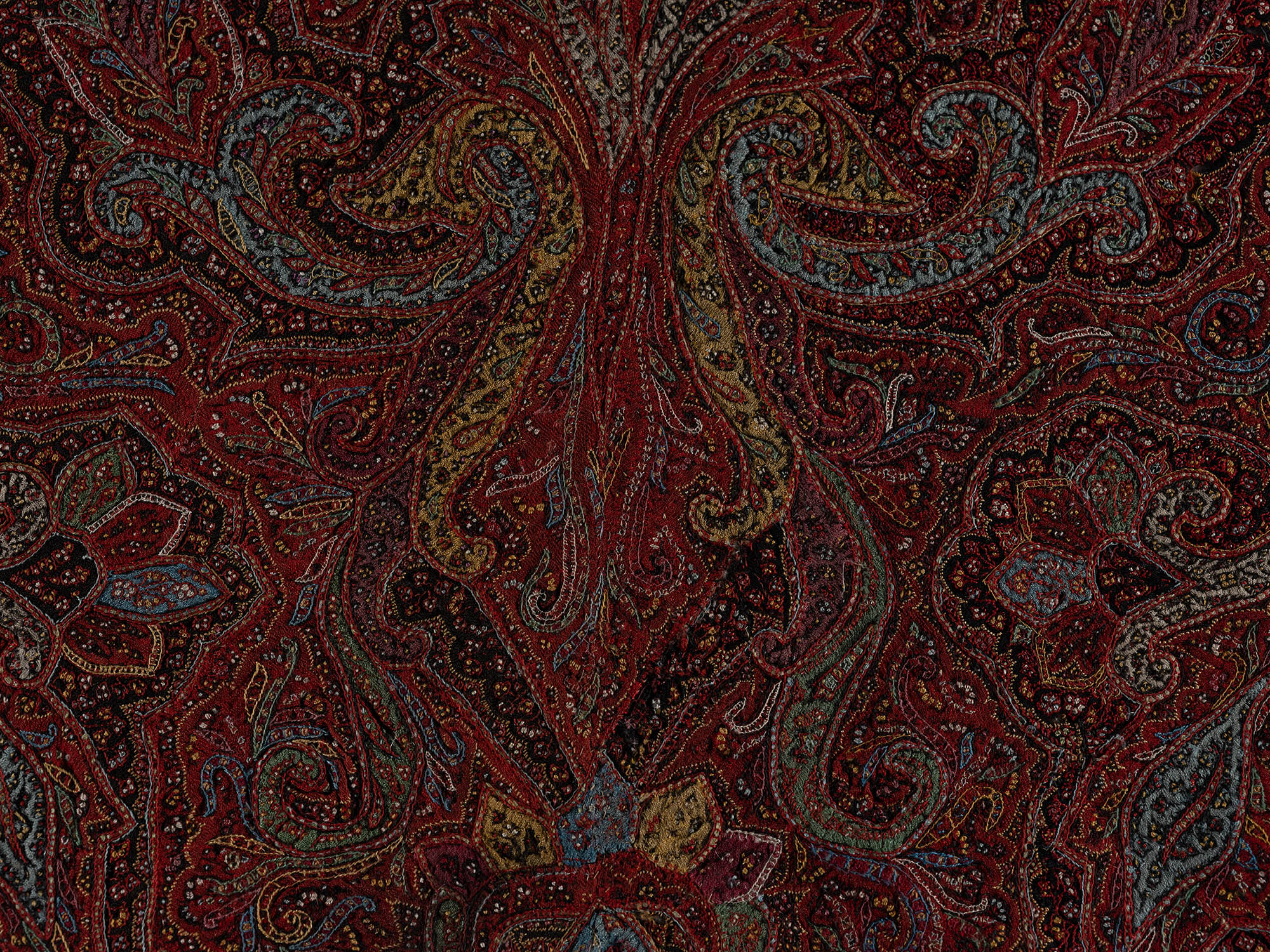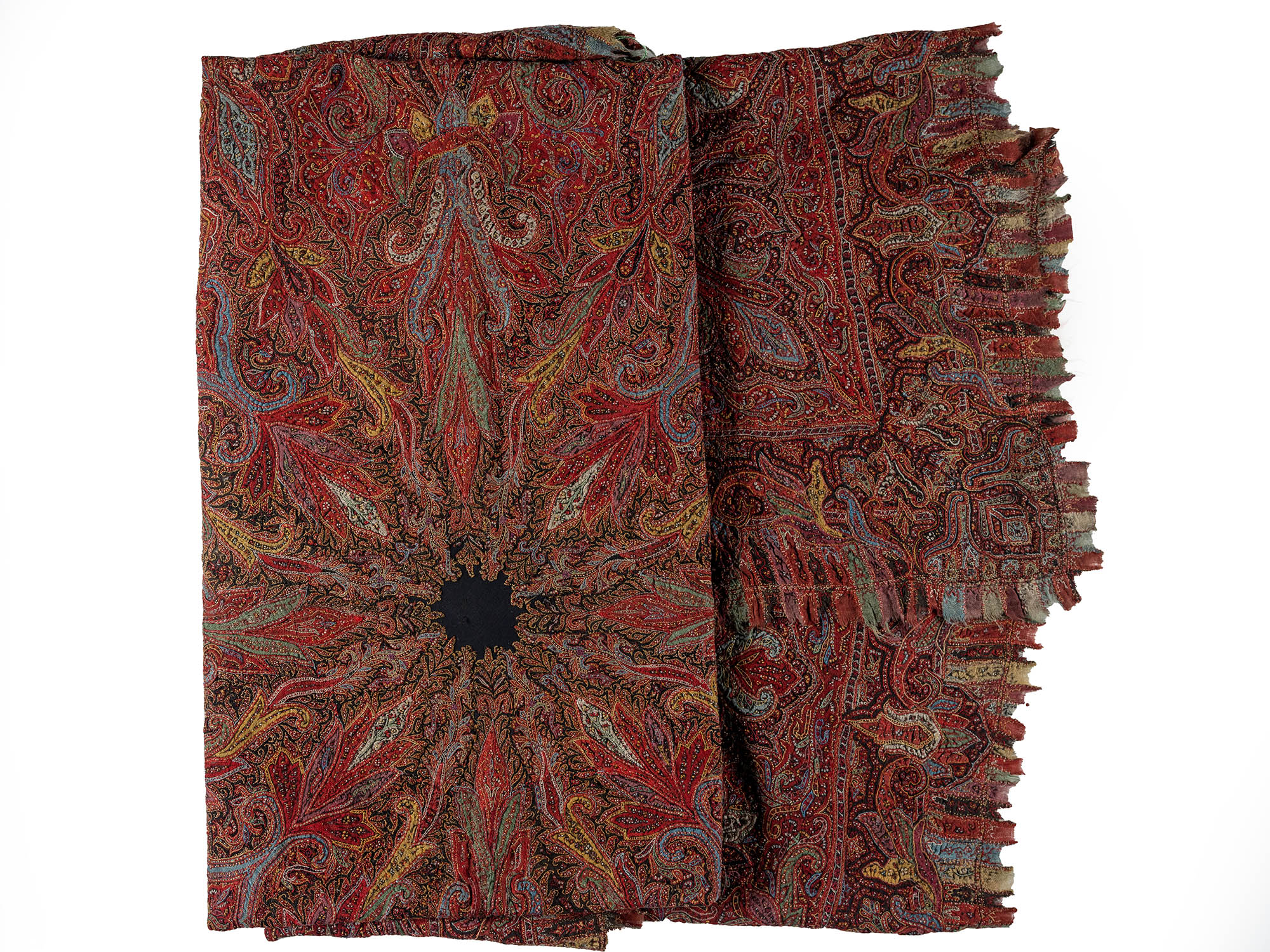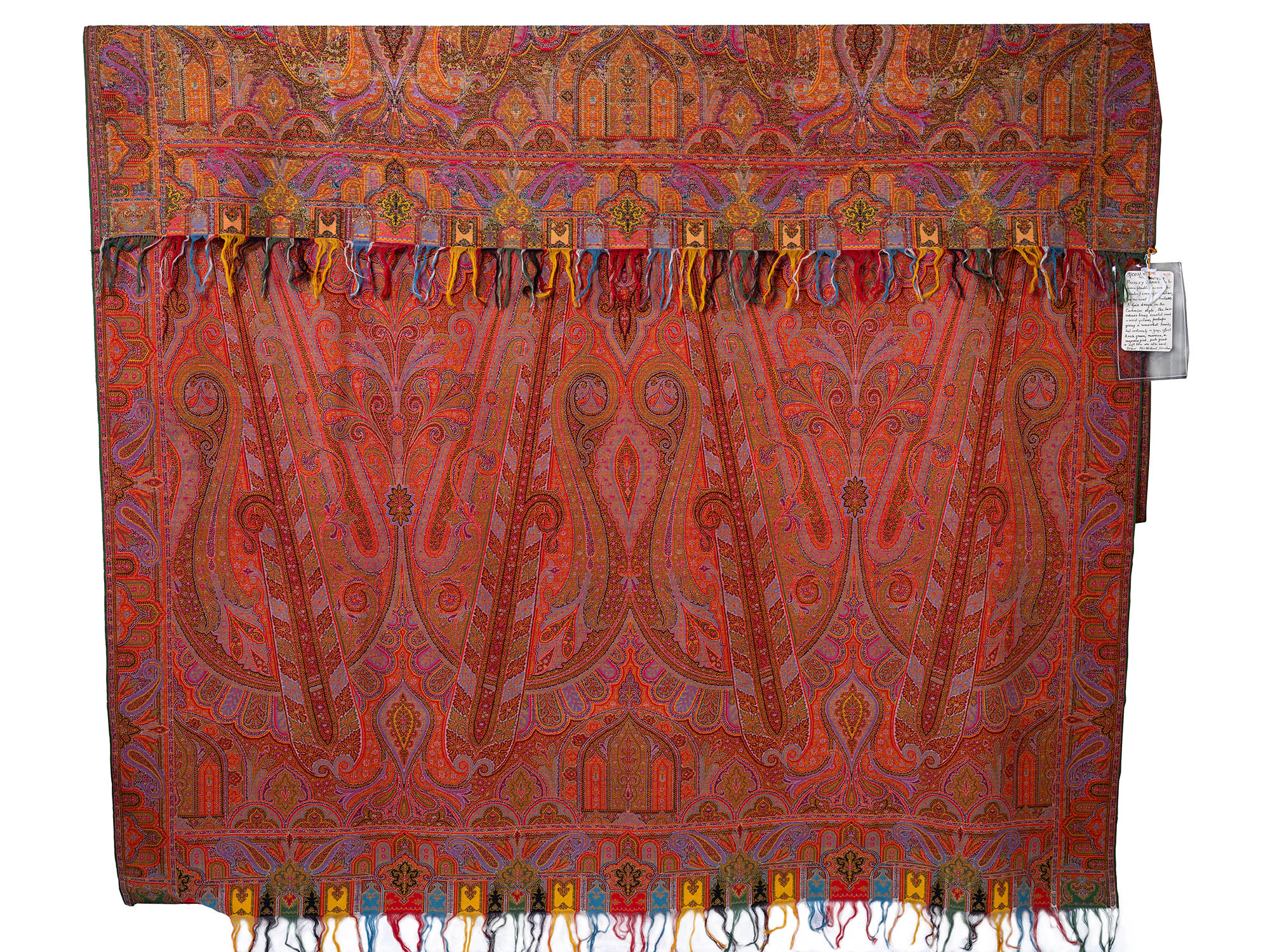#3 BOTEH/PAISLEY SHAWLS
Exquisitely fine woven Kashmir wool shawls from India became status symbols in Europe in the 18th century, and were considered the height of fashion up until the 1870s. As highly desirable commodities, factory-owners in Europe were quick to capitalise on their appeal, and employed new industrial methods to maximise profits. Towns such as Norwich, Edinburgh and Paisley became known for their mechanised shawl-making.
In Britain, ‘paisley’ has now become synonymous with the teardrop shape motif known as the boteh or buta in India, which likely evolved from an earlier Persian rendering of a pinecone.
The imitation shawls, as opposed to the exclusive and expensive Indian-made originals, became a marker of class in Britain: “...the shawls of Paisley … [were] for the comfort and the decent ornament of the humblest in the land” wrote the magazine publisher Charles Knight in 1851.




